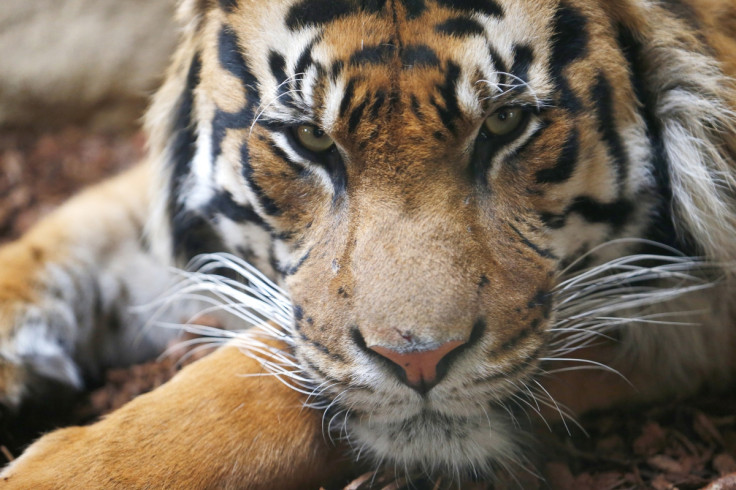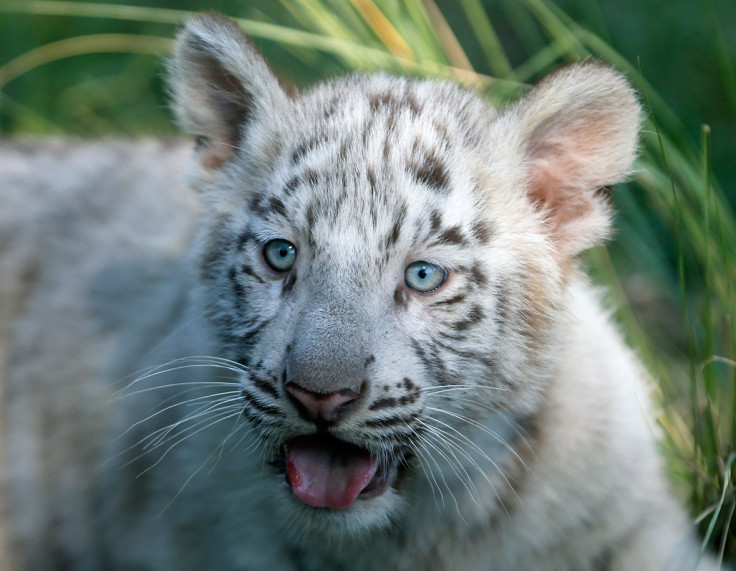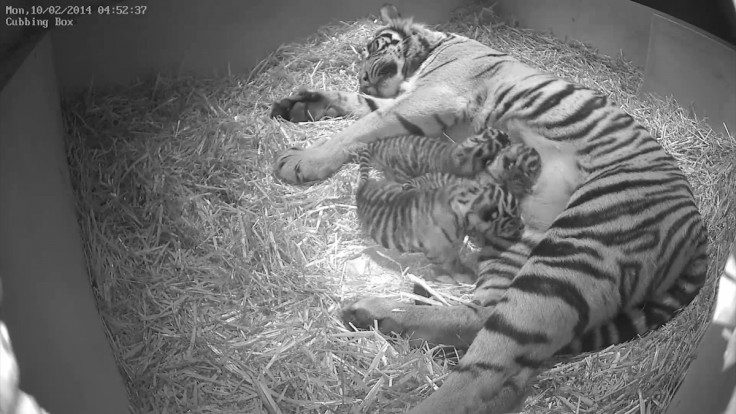International Tiger Day 2014: 10 Facts About Iconic Big Cats on Brink of Extinction

International Tiger Day 2014 is an annual event held every 29 July to raise awareness of the problems facing tigers as their population plummet to an all-time low.
The event was founded in 2010 at the Saint Petersburg Tiger Summit at a point when wild tigers were facing extinction.
Organisations from across the globe now champion Tiger Day, with supporters including WWF, Traffic, National Geographic and the Smithsonian Institute.
To mark International Tiger Day 2014, here are some facts and figures about the iconic big cat.
Species

There are six main species of tigers living in the wild today: Siberian tigers; Bengal tigers; Indochinese tigers; Malayan tigers; Sumatran tigers and South China tigers. Several subspecies of tigers have already gone extinct, including Bali and Javan tigers.
Tigers can also be categorised by their fur colour. White tigers – possibly the most well-known subtype – are produced when tigers carry a rare gene and were first bred in the early 19<sup>th century. It is so rare it only occurs once every 10,000 births.
Numbers
Tigers have been declining rapidly over the last 100 years, with 97% of wild tigers being lost in the last 100 years. At present, as few as 3,200 tigers remain in the wild. They are poached for medicinal purposes and for their fur. They are hunted when they stray into inhabited areas as the forests around them shrink, leading prey to become scarcer.

It is estimated that tigers have lost 93% of their natural habitat. Climate change is also posing a major threat, with rising sea levels threatening to wipe out even more of their habitat.
Stripes

All tigers have a unique set of stripes, similar to human fingerprints. Their stripes provide camouflage for them while hunting in the jungle, as few large animals have the colour vision capabilities to detect them. While stripes differ between subspecies, most tigers have more than 100 stripes. Their pattern is also found on their skin, so if you were to shave a tiger, it's stripes would still be visible.
Teeth
Tigers have the largest teeth of all the big cats, having developed them from the habit of hunting large herbivores that have thicker and larger bones than other big cat prey. Tigers also hunt alone, meaning they have to work harder than lions, for example, who hunt in packs.
Hunting
Tigers ambush their prey and use their body strength to knock it off its balance. Once down, the tiger will bite the back of its prey's neck, breaking the spinal cord, piercing the windpipe or severing the main vein or artery. Once caught, the tiger uses it's forelimbs to hold onto the prey and stays attached to the creature's neck until it is dead.
Swimming

Unlike most other species of cat, tigers like water and are very good swimmers. They often cool off in rivers and hunt in the water. Tigers have also been known to jump onto fishing boats for the tasty delicacies on board.
Jumping
Tigers can jump five metres high from a standing start, and even further vertically, making them one of the highest-jumping mammals in the world. Their legs are so powerful they can even remain standing after they have died.
Communication
While tigers are solitary animals, they have several methods of communicating with one another. Adults mark their territory through scent by spraying urine and faeces around. Mothers also have individual scent glands that allow cubs to follow them.
They use their tails to signal if they are relaxed – by hanging it loosely – or rapidly moving it from side to side or holding it low to indicate aggression. Vocally, tigers roar and chuff, a sound which consists of a gentle brrr sound and is primarily used as greetings between tigers.
Mating and pregnancy

Male tigers identify a female's reproductive status by sniffing their urine markings. Females are only receptive for a few days, so mating is frequent during that time. Pregnancies last for around 100 days and normally between three and four cubs are born.
The female will rear the cubs alone and they are kept in a den for about eight weeks. Male tigers will kill cubs so the female will become receptive again. Infant mortality is high among tigers, with fewer than half of cubs born living past two years.
Cub life
Cubs leave the den at about two months and become independent at about 18 months. However, they do not leave their mother until they are about two-and-a-half years old. Cubs reach sexual maturity by the age of four. In captivity, tigers can live up to 26 but in the wild their life expectancy is just 10 years.
Poaching

Tiger poaching poses a huge threat to the already waning population, with demand for body parts and fur only increasing as their numbers deplete. Their bones and body parts are used in Chinese medicine for pain killers and aphrodisiacs. Their claws are used to treat insomnia.
In Sumatra, poachers lay wire traps that close in on the tiger's paw when it stands on it. The tiger's arm or leg is then raised into the air, preventing it from getting away. In some cases, the wire cuts the tiger down to the bone, while others have chewed off their own limbs to get away. Earlier this year it was also revealed businessmen in China were having tigers caught, tortured and killed to entertain guests.
Read more about International Tiger Day 2014 and how to help protect the species here.
© Copyright IBTimes 2024. All rights reserved.






